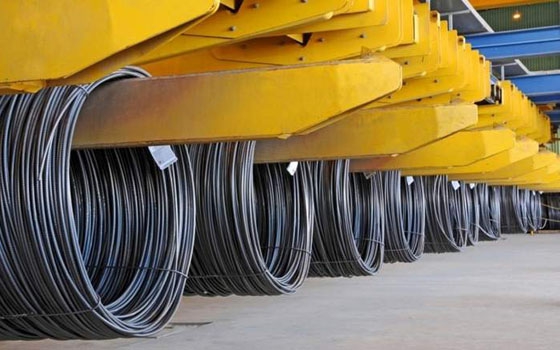Rising demand for processed metals, fuelled by regional infrastructure projects, is set to help Abu Dhabi’s industrial sector build new momentum in terms of both output and sales.
Downstream businesses are also expected to provide further opportunities for growth, supporting the government’s ongoing plans to broaden the emirate’s economic base.
However, regional competition and cheap imports from farther afield could see more downward pressure on prices.
Eyeing international sales
The government’s long-term blueprint for the emirate, Abu Dhabi Economic Vision 2030, places industrial expansion high on the agenda as the emirate looks to increase the GDP contribution of non-oil sectors to 64% over the next 14 years.
The industries targeted under the plan – notably capital-intensive and export-oriented sectors – are projected to outpace GDP growth. A sharper focus on manufacturing should also support broader efforts to accelerate job creation and promote the development of industrial companies.
Ayman Al Makkawy, director-general of the Industrial Development Bureau, told OBG that a drive under way in the UAE to develop sustainable industries has heightened the role earmarked for industrial manufacturing.
“The metals and petrochemicals industries are important diversification anchors for the UAE, and developing the downstream processing sectors is key to furthering its efforts,” he said.
Other growth industries, such as aviation, food processing, industrial and transport equipment, construction materials, packaging and energy support services, are also likely to increase demand for metals and engineered metals in the emirate.
A new deal signed in mid-January between Abu Dhabi Ship Building and shipping services provider Docklands World could offer an additional boost for metals suppliers. According to the memorandum of understanding, the firms will form a strategic partnership to offer naval and commercial vessel maintenance services, which often involve the use of steel and aluminium.
Major players
Abu Dhabi’s efforts to spur industrial growth will be steered in large part by local players like Emirates Global Aluminium (EGA) and Emirates Steel.
EGA, which was formed through the 2013 merger of Abu Dhabi-based Emirates Aluminum (EMAL) and Dubai Aluminum, has annual casting capacity of 2.8m tons, representing almost half of the region’s total. The company’s EMAL facility also houses the world’s largest single-site smelter.
Aluminum has had one of the steepest growth trajectories of any metal segment in Abu Dhabi in recent years. Its share of total exports rose from 1.9% in 2013 to 12.2% by 2014, according to Statistics Centre – Abu Dhabi.
Steel has also seen steady growth, with regional demand for the metal expected to rise by 4.6% to reach 76.1m in 2016, according to the World Steel Association.
Emirates Steel is a major regional player, producing rebar, wire rod and structural steel, with a combined production capacity of 3.5m tons.
Demand drivers
Strong demand from key sectors in the region, such as power and construction, should see sales of both steel and aluminum increase over the coming decade, with a focus on developing value-added products.
Emirates Steel, for example, has included Q-class – or nuclear quality, reinforcing steel for use in the construction of nuclear power stations – in its production portfolio, as well as medium- and high-carbon wire rod, sheet piles and offshore grades.
As the only steelmaker in the MENA region currently qualified to produce Q-class reinforcing steel, this should secure Abu Dhabi a competitive advantage, particularly as the UAE and other Gulf states pursue civilian nuclear power capacity.
Saeed Ghumran Al Romaithi, CEO of Emirates Steel, is similarly bullish on the industry’s prospects.
“The GCC’s construction sector continues to be stable, which drives demand for steel,” Al Romaithi told OBG. “The multi-billion-dollar infrastructure projects planned across the region will be the main driver of the region’s demand for steel in the coming years.”
External pressures
While there are clear growth prospects for the aluminum and steel industries, both will likely have to contend with growing competition.
Faced with cooling domestic demand, China has sought to expand metal exports to the Middle East, often at below-market prices.
Chinese exports of finished steel products to the GCC jumped in 2015, rising by 80% to nearly 5.6m tons in the twelve months to May 2015, according to Emirates Steel. The Asian giant is also directly competing with local producers in other export markets.
Additional producers, including Turkey, members of the Commonwealth of Independent States and South Korea, are aggressively marketing cheap steel in the region, prompting calls from Abu Dhabi’s producers for the implementation of more stringent anti-dumping measures.
While China announced plans to curb steel output in early February, with as much as 150m tons of capacity to be shuttered over a five-year period, analysts believe this will do relatively little to ease deflationary pressures.
China is also increasing competition in the aluminum industry, after growing its share of global supply from 18% in 2003 to 50% by 2015. This, combined with continued oversupply in the market, could keep prices subdued and competition heated in 2016.
Oxford Business Group
8 March
























































